History
SM40 were imported for the first time from Hungary in 1959, after tests at the distance of 2,185 km with cargo load of 156 t.
The first name for this loco was Lwe58, and in 1960 it was changed to SM40 (according to RN-58/MK0001 regulations).
Items delivered from 1961 had a few modifications, and a different code-name SM41.

The M62 is a Soviet-built diesel locomotive for heavy freight trains, exported to many Eastern Bloc countries as well as to Cuba, North Korea and Mongolia. Beside the single locomotive M62 also twin versions 2M62 and three-section versions 3M62 have been built. A total number of 7,164 single sections have been produced, which have been used to build 5,231 single-, twin- and three-section locomotives.

MÁV Class M44 is a Hungarian shunting engine built from 1954 to 1971, and used by multiple railways, including Hungarian State Railways (MÁV), Polish State Railways (PKP), Bulgarian State Railways (BDŽ), Yugoslav Railways (JŽ), and some industrial railways in the former countries of the Eastern Bloc.

SP45 is the name for a Polish diesel locomotive. It was built for the purpose of passenger traffic. No operating examples of this loco remain. All have been phased out or rebuilt into SU45.
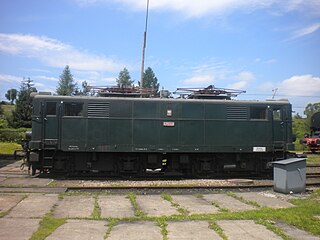
The PKP class EP03 is a type of electric locomotive used by Polish railway operator Polskie Koleje Państwowe (PKP).
PKP classification system is a system of assigning letters and numbers to series and individual locomotives used by the PKP - Polish national railroad operator.

EU07 is the name for a Polish electric locomotive in service of the Polish railway operator PKP. This locomotive was designed as a mixed traffic locomotive, and as such is used both in freight and passenger traffic.
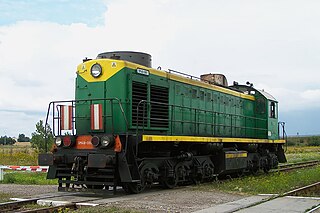
SM48 is the name for class of Soviet diesel locomotives operating in Poland for PKP. The original designation was ТЭМ2 (TEM2), and was the Soviet-built version of the ALCO RSD-1.
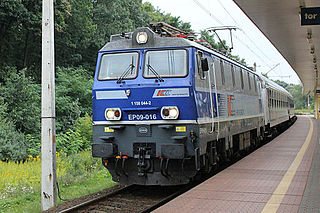
EP09 is a Polish electric locomotive used by the Polish railways, Polskie Koleje Państwowe (PKP) and produced by Pafawag of Wrocław between 1986 and 1997.
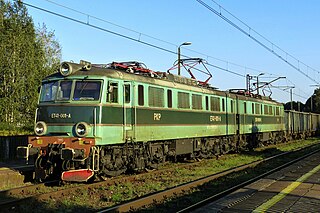
ET41 is the name for a Polish electric locomotive used by the Polish railway operator (PKP). Three such locomotives were briefly rented to the Croatian Railways between 1995 and 1996 and were given the designation HŽ series 1081 there.
The history of rail transport in Poland dates back to the first half of the 19th century when railways were built under Prussian, Russian, and Austrian rule. Of course, "divided Poland" in the 19th century was the territory of the former Polish–Lithuanian Commonwealth and not that one of today's Republic of Poland. After Polish independence was declared on 11 November 1918, the independent Polish state administered its own railways until control was surrendered to German and Soviet occupiers during World War II.

PKP class Ok22 is a class of ordinary passenger (O) 4-6-0 (k) steam locomotive designed in 1922 for Polskie Koleje Państwowe. It was the first locomotive designed in Poland after World War I, so the design work was done jointly with Hanomag, based on the Prussian P 8
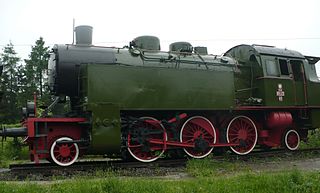
PKP class OKl27 is a class of ordinary passenger (O) tank (K) 2-6-2 (l) steam locomotives designed in 1927 for Polskie Koleje Państwowe. It was the first completely Polish construction. The design was prepared by eng. Bryling.
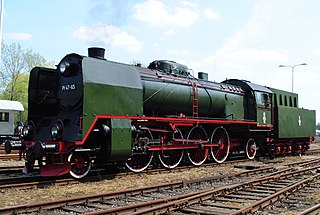
PKP Class Pt47 is a Polish steam locomotive. An improvement of the successful pre-war PKP class Pt31 class, the main difference is the addition of circular tubes in the fire chamber, thereby significantly increased boiler performance. This class also featured a superheater and many have mechanical stokers to feed coal into the firebox. 180 locomotives were built in total between 1948 and 1951. The designation stood for fast passenger (P) 2-8-2 (t) locomotive designed in 1947.

Izera railway is a line connecting the Polish town of Jelenia Góra (Hirschberg) with Szklarska Poręba (Schreiberhau). It is part of the former Prussian Zackenbahn, that used to connect Prussia with the Austro-Hungarian Empire via the New World Pass. The line is currently operated by PKP as line number 311.
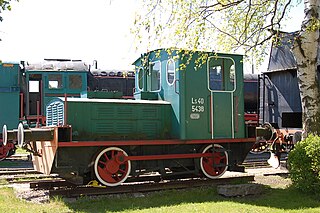
SM02 is a Polish series of diesel shunting locomotives used by PKP. 12 of the locomotives were introduced into PKP after 1954. It is the first diesel locomotive of Polish production.
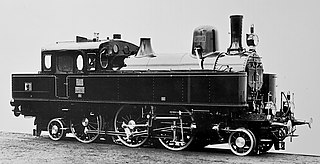
The kkStB 229 was a class of passenger 2-6-2 tank engines with the Imperial Royal Austrian State Railways, kkStB.

ŽS series 641 is a Serbian code for shunting Hungarian-made diesel-electric locomotive class on Serbian Railways. Formerly it was operated by Yugoslav Railways under designation JŽ series 641. This class has nickname "Mađarica" as they were produced in Hungary.

The Fablok T3A also known as TKh49 or Ferrum 47 / 724 is a class of Polish steam industrial tank locomotive. It was built by Fablok in 1948-1961 years.
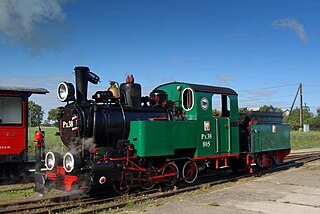
Px38-805, named Leon, is a preserved Polish 600 mm narrow gauge steam locomotive built by Fablok in Chrzanów, Poland. It was the only locomotive of PKP class Px38, and one of three built locomotives of Fablok W5A type.

PKP Class Pt31 is a Polish steam locomotive of Polskie Koleje Państwowe, designed for hauling heavy long-distance passenger trains, built in 1932-1940. The designation stood for fast passenger (P) 2-8-2 (t) steam locomotive designed in 1931.
This page is based on this
Wikipedia article Text is available under the
CC BY-SA 4.0 license; additional terms may apply.
Images, videos and audio are available under their respective licenses.


















